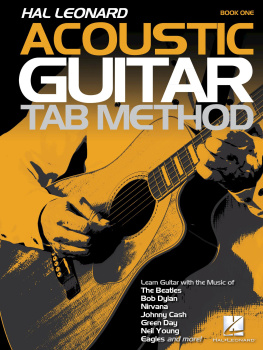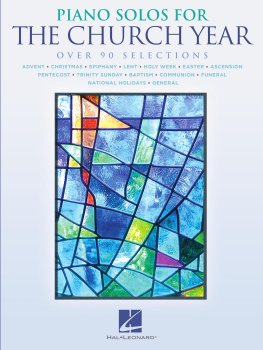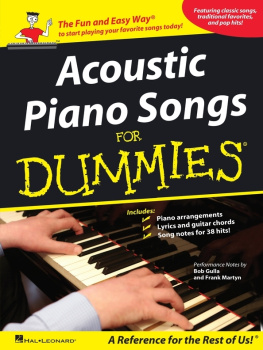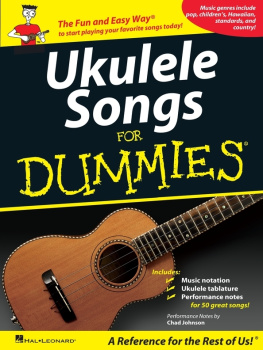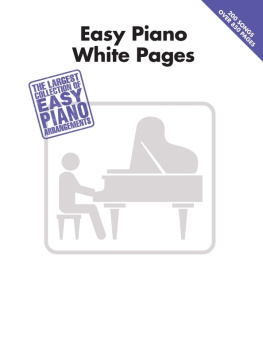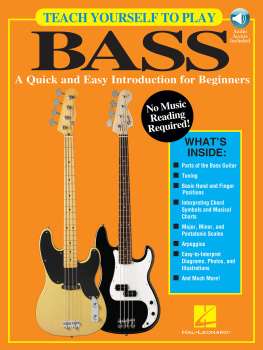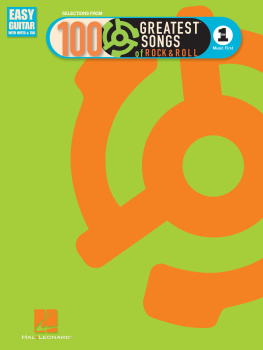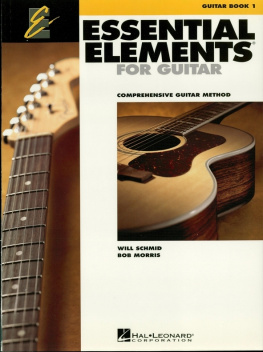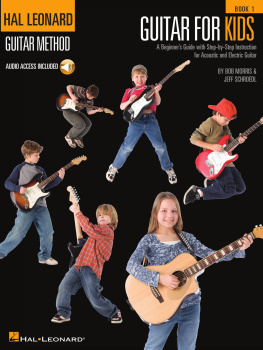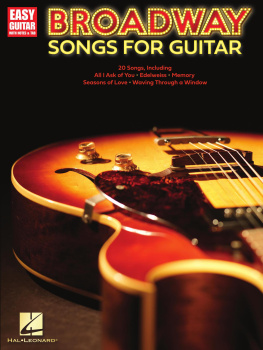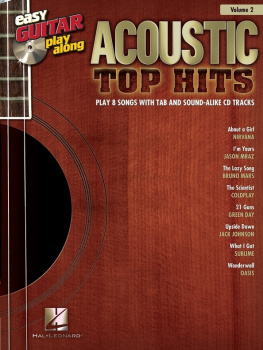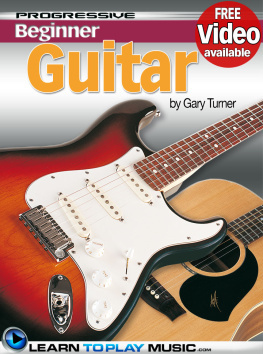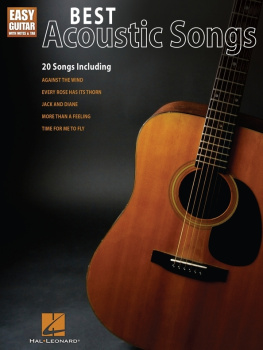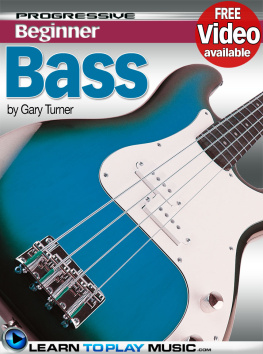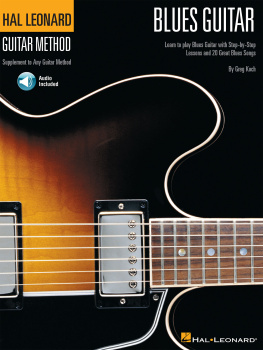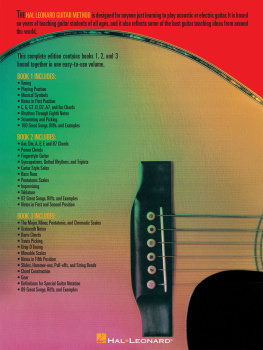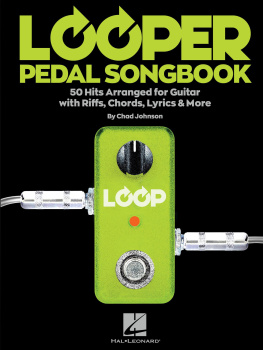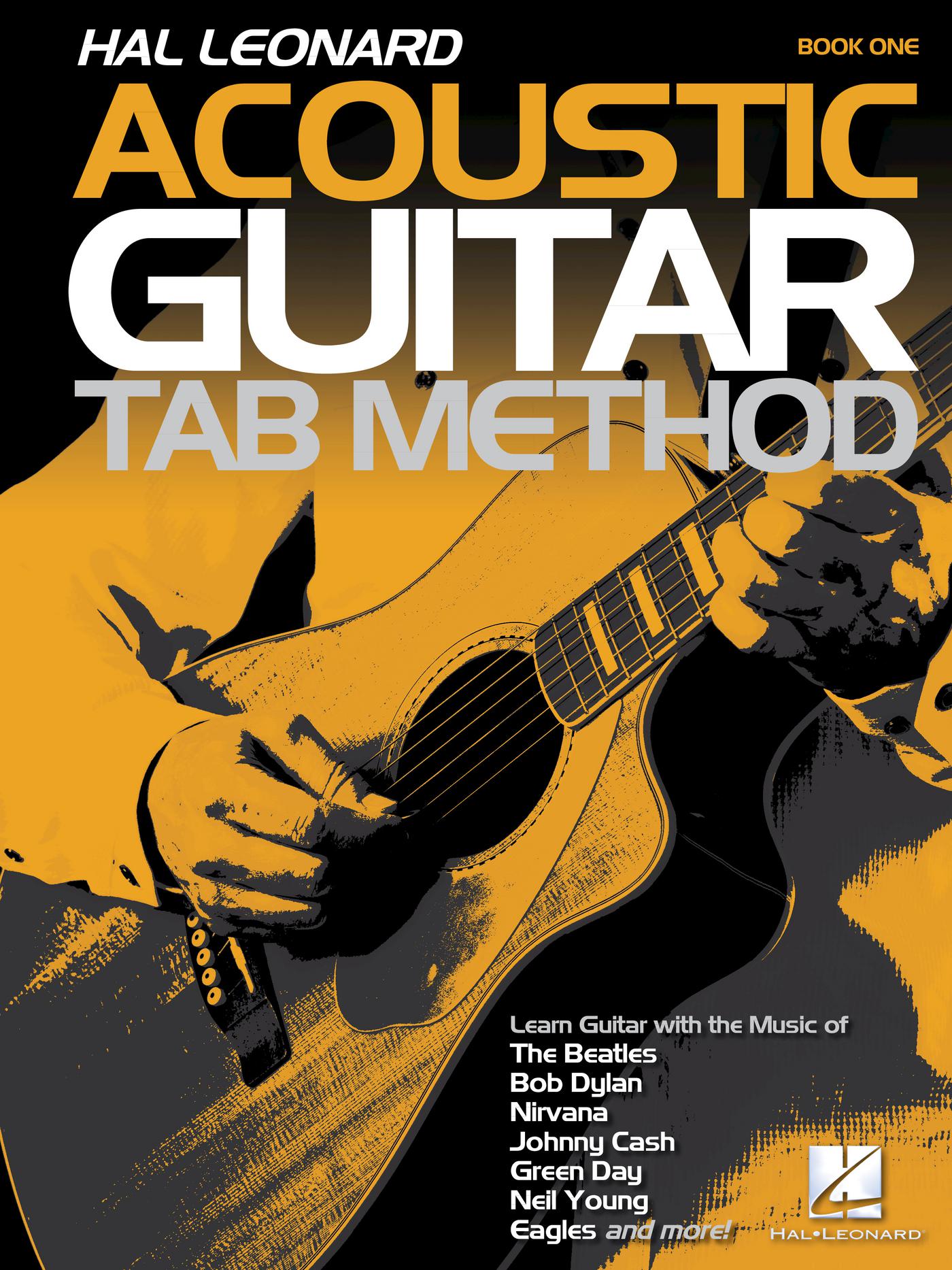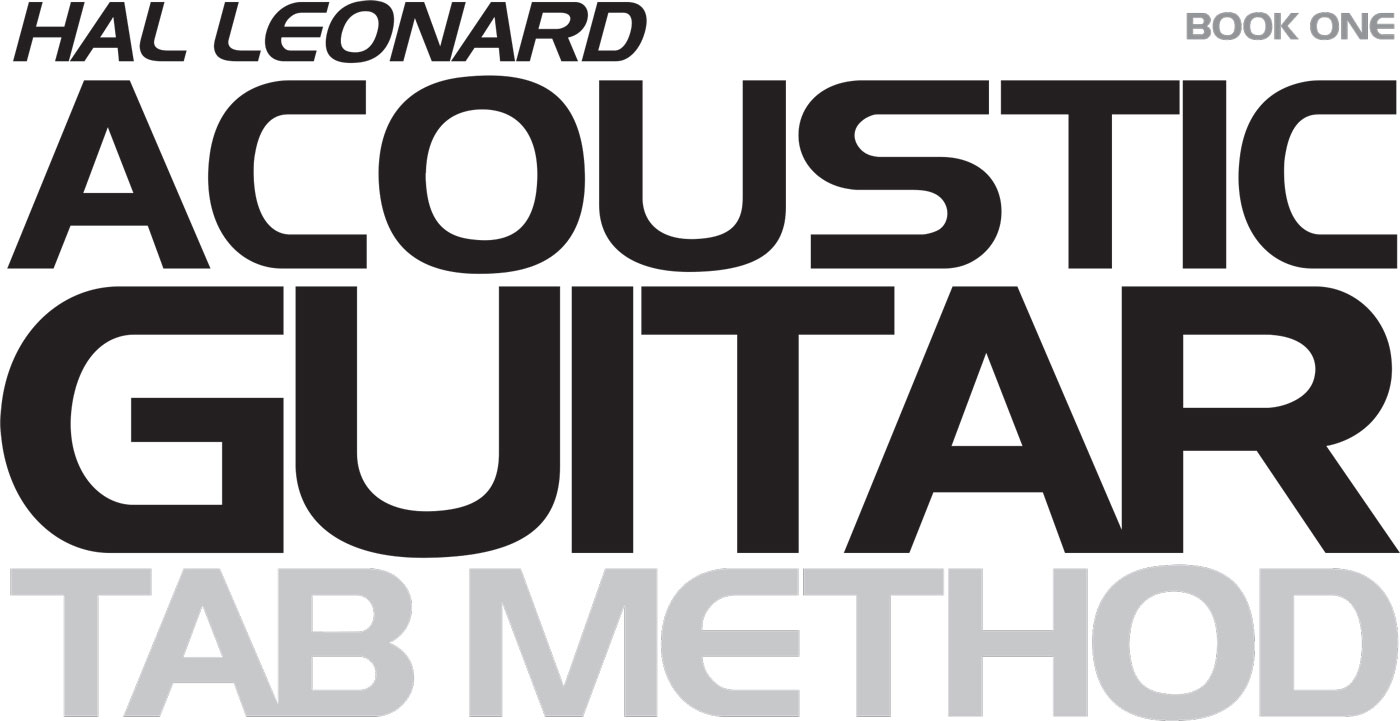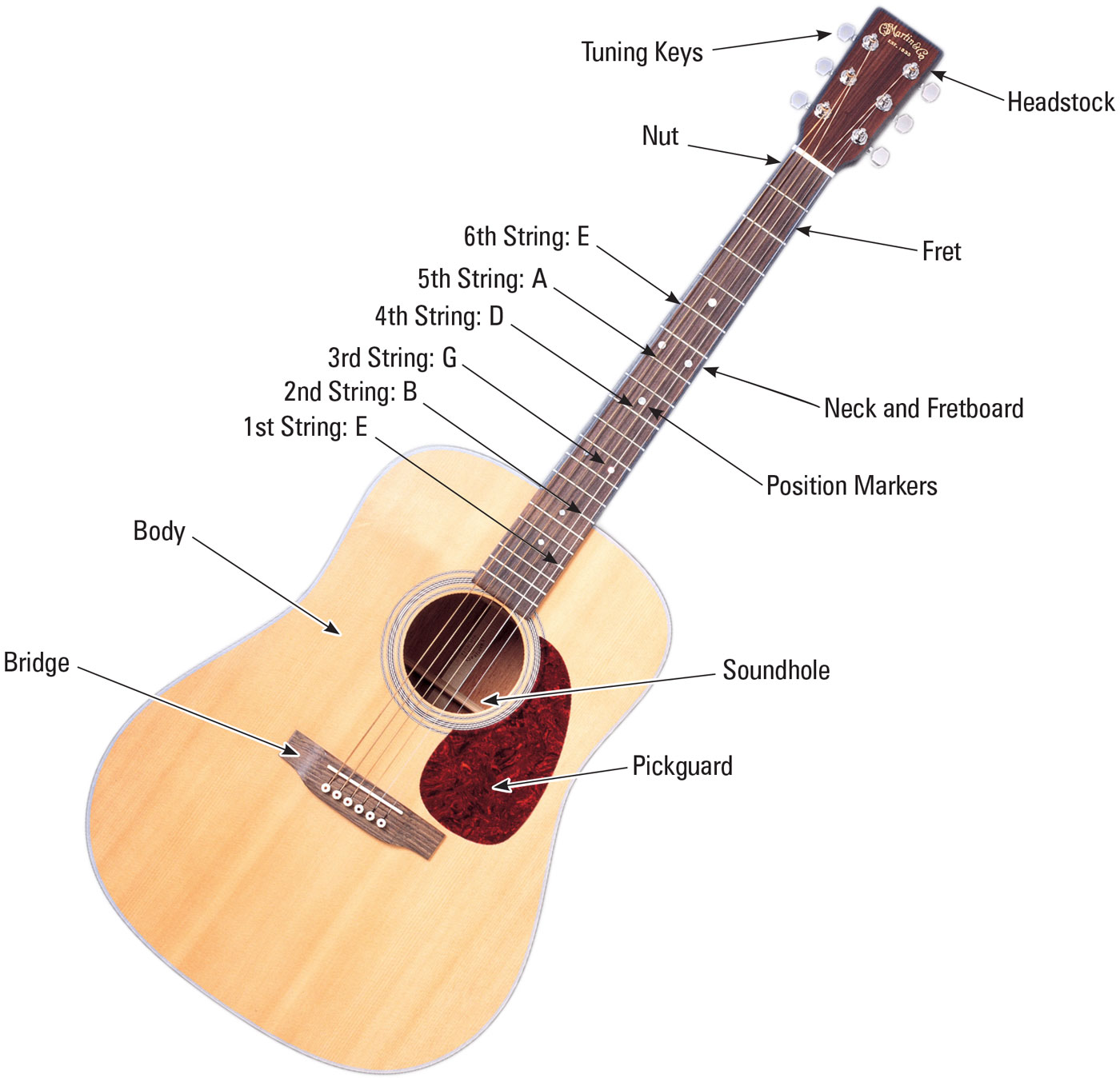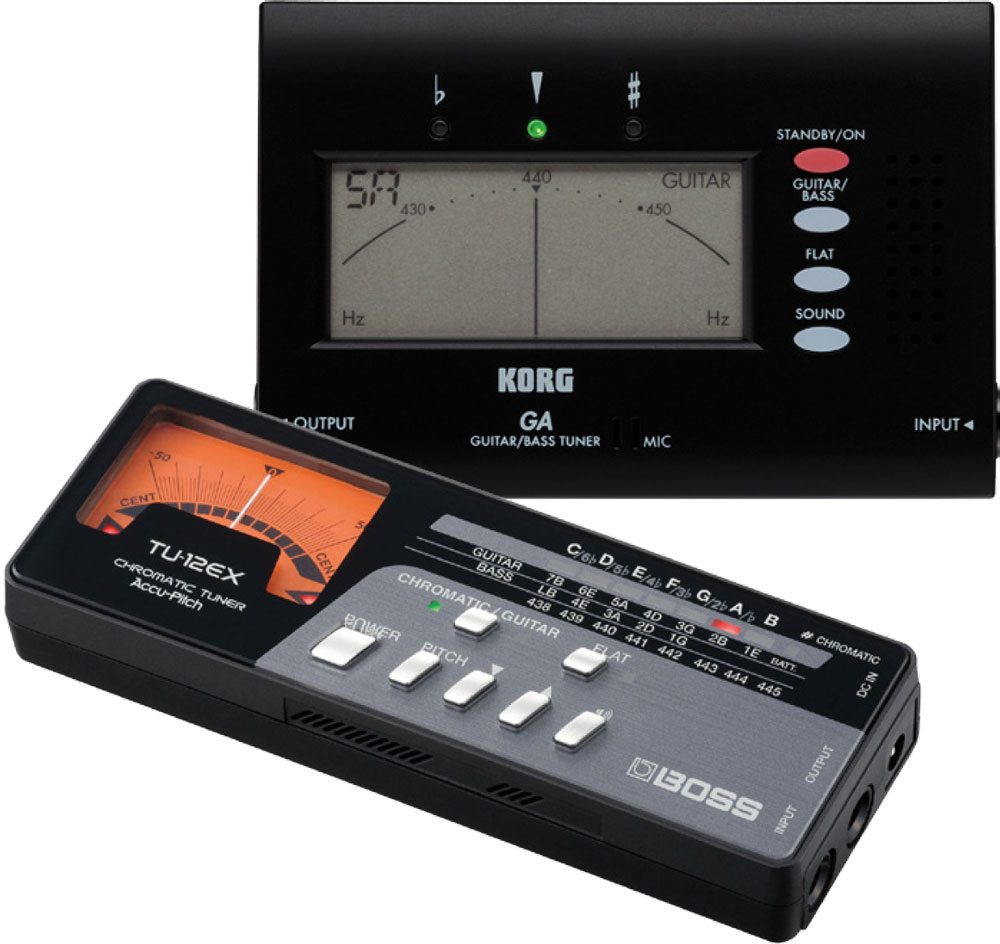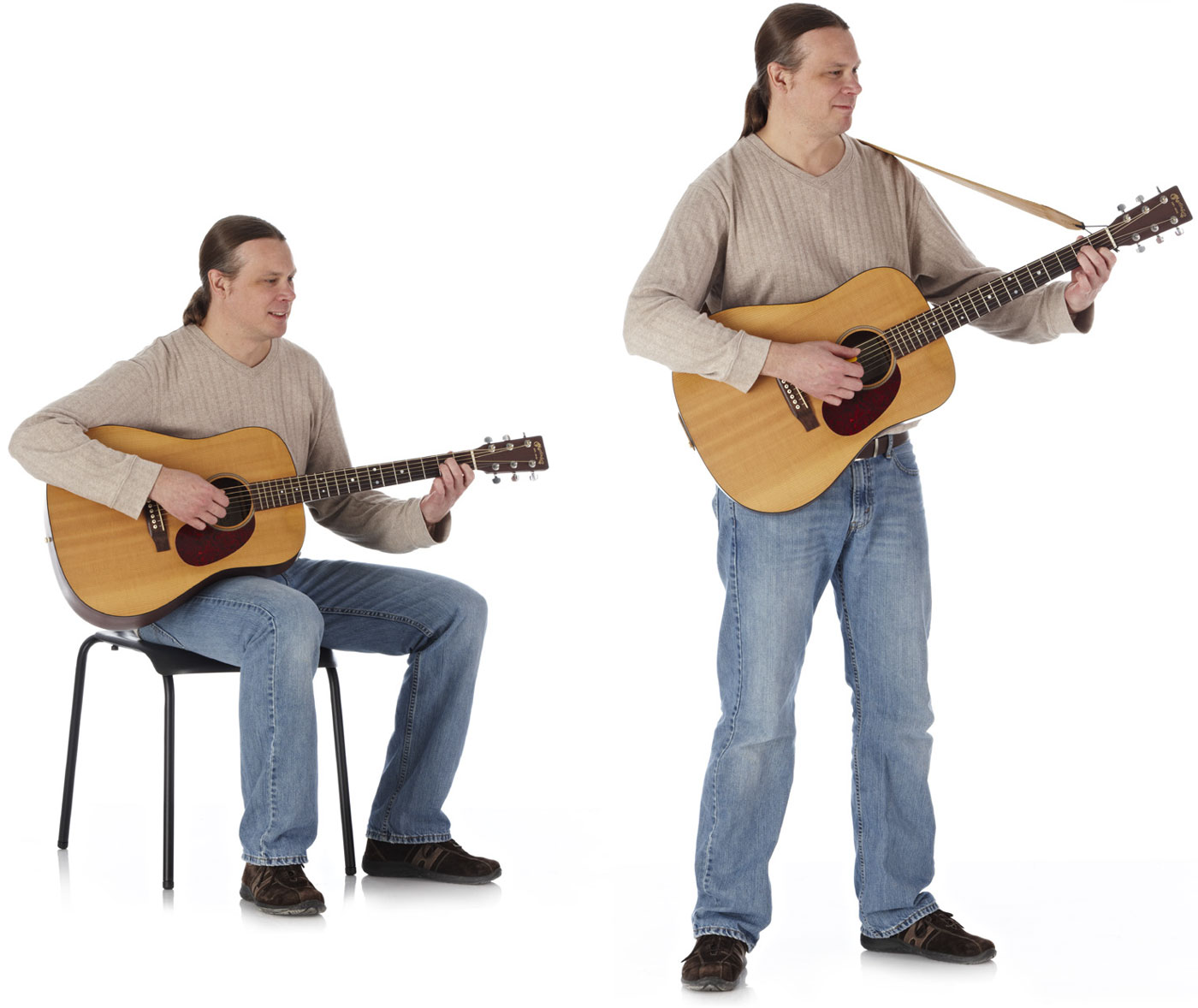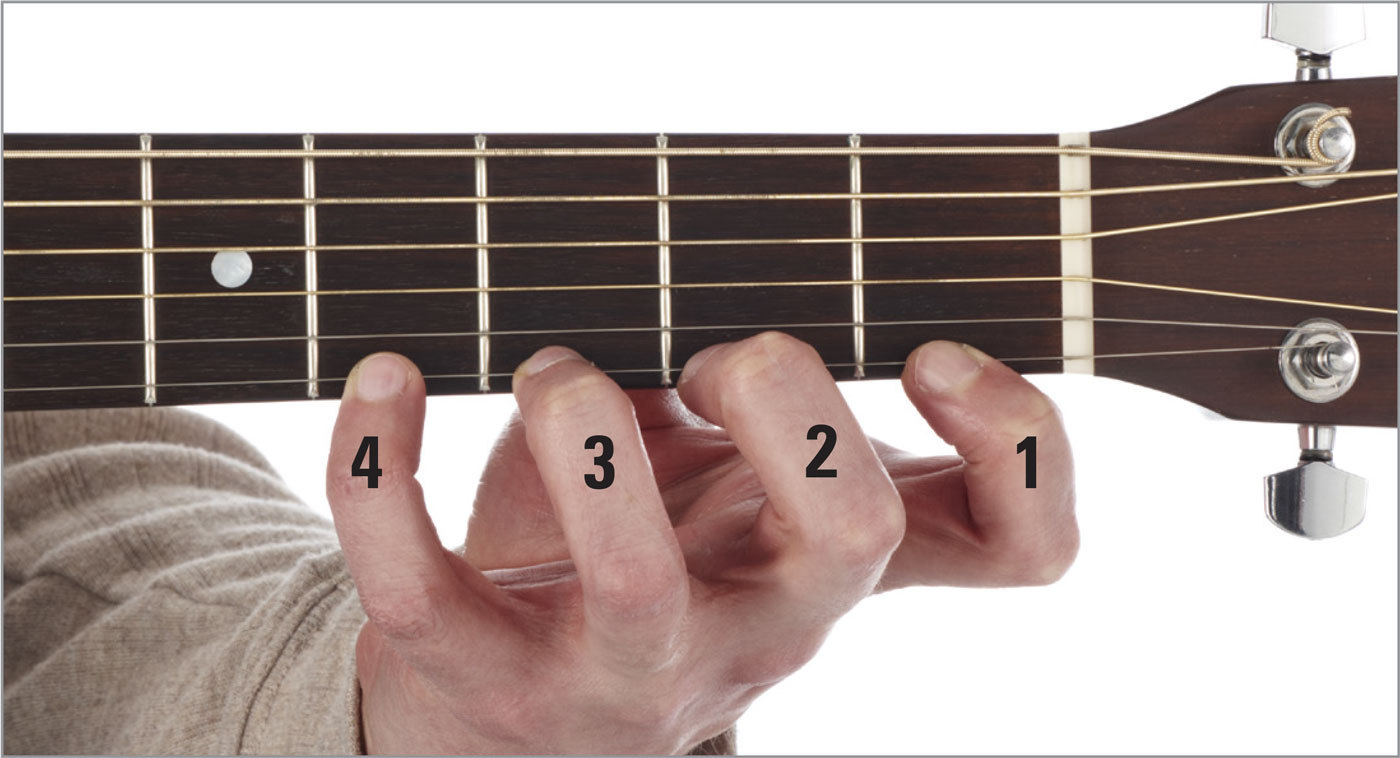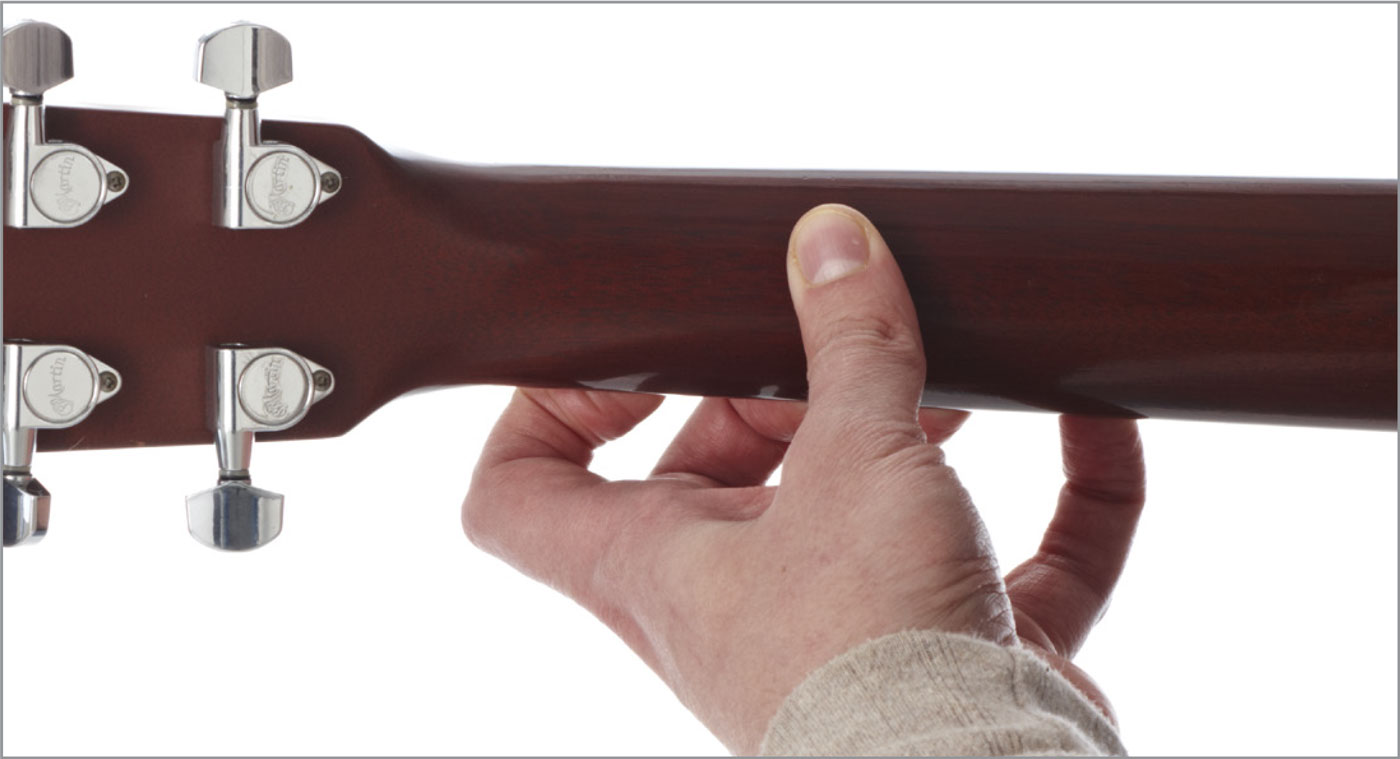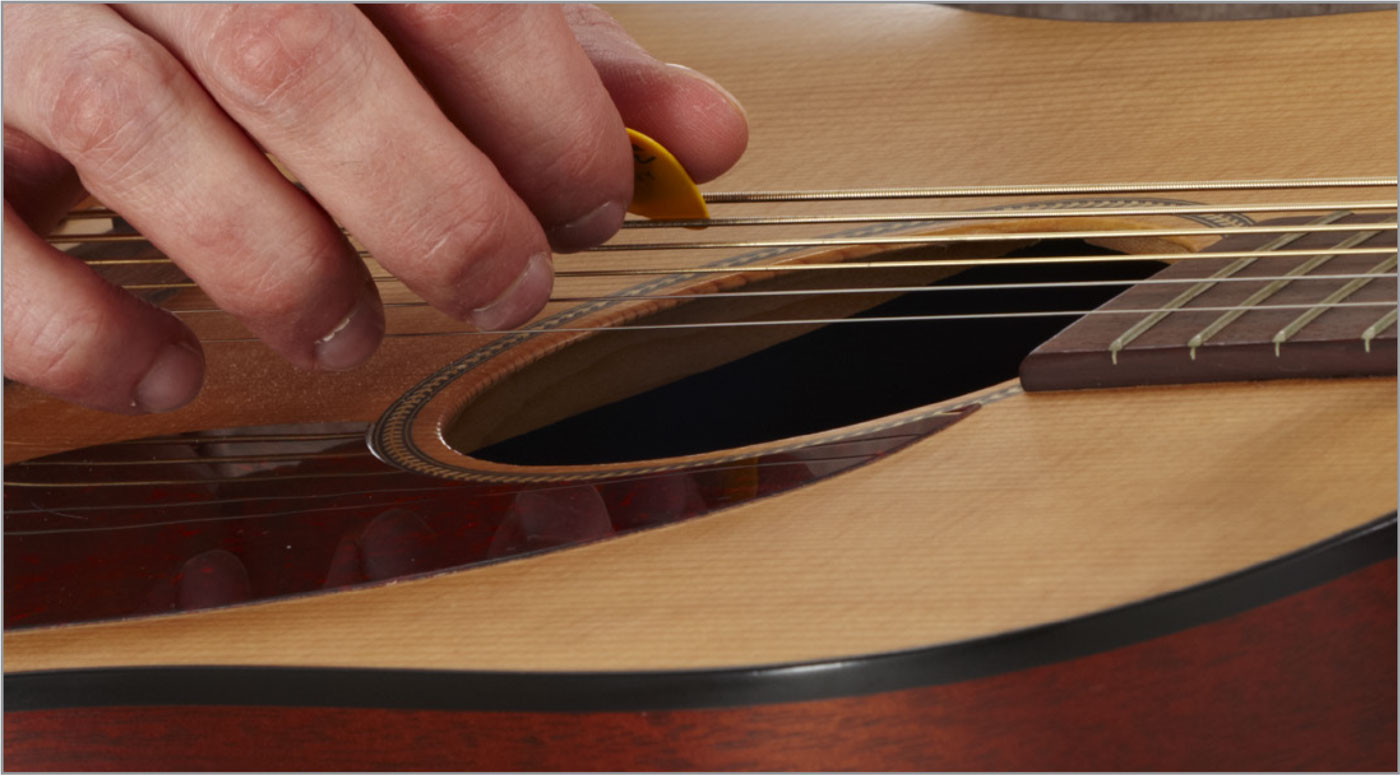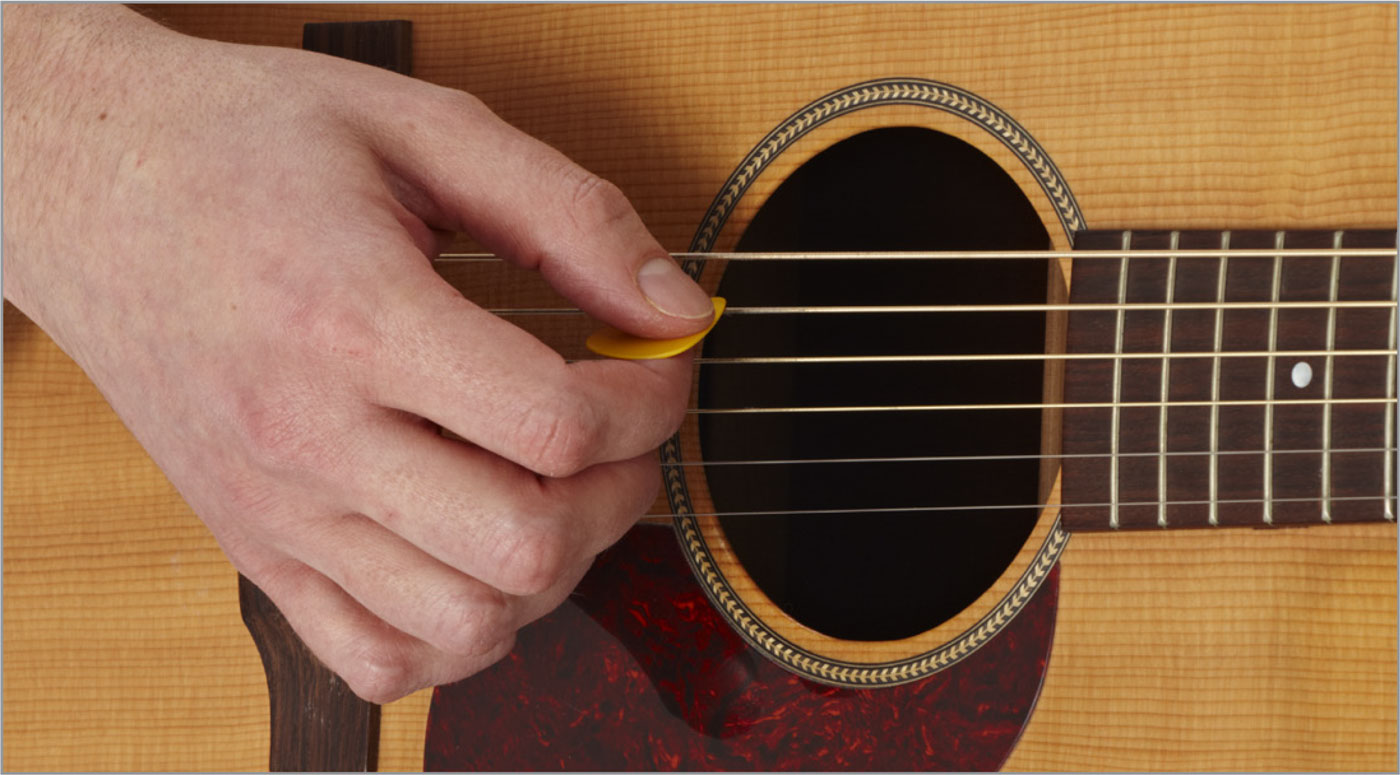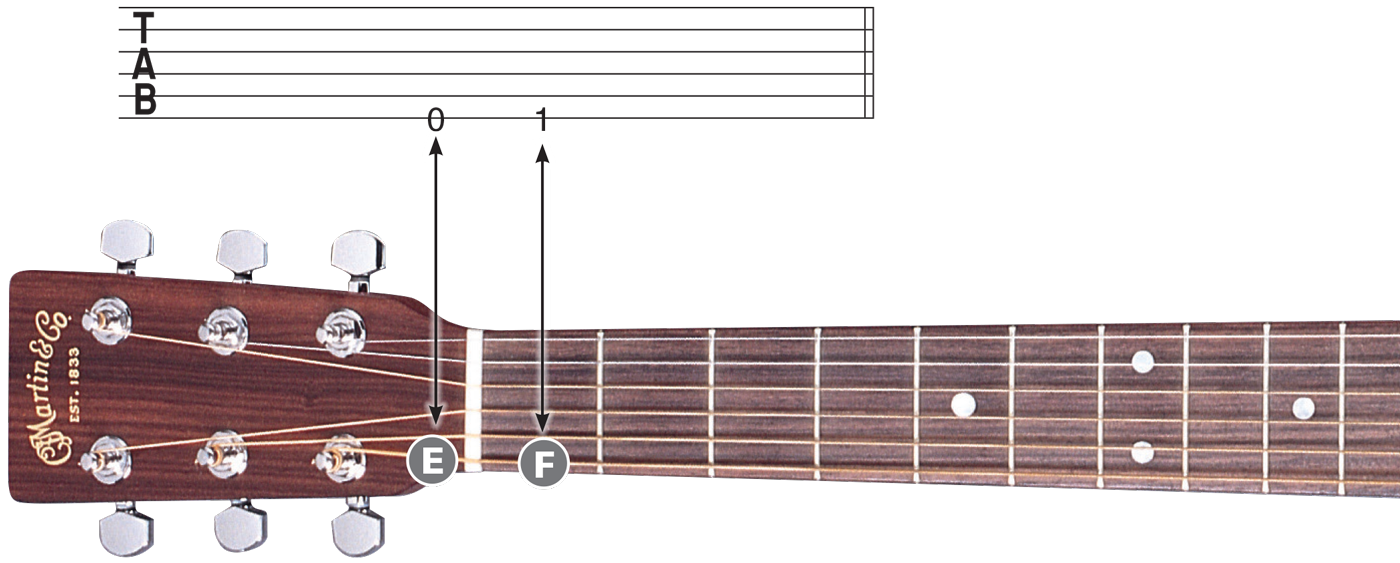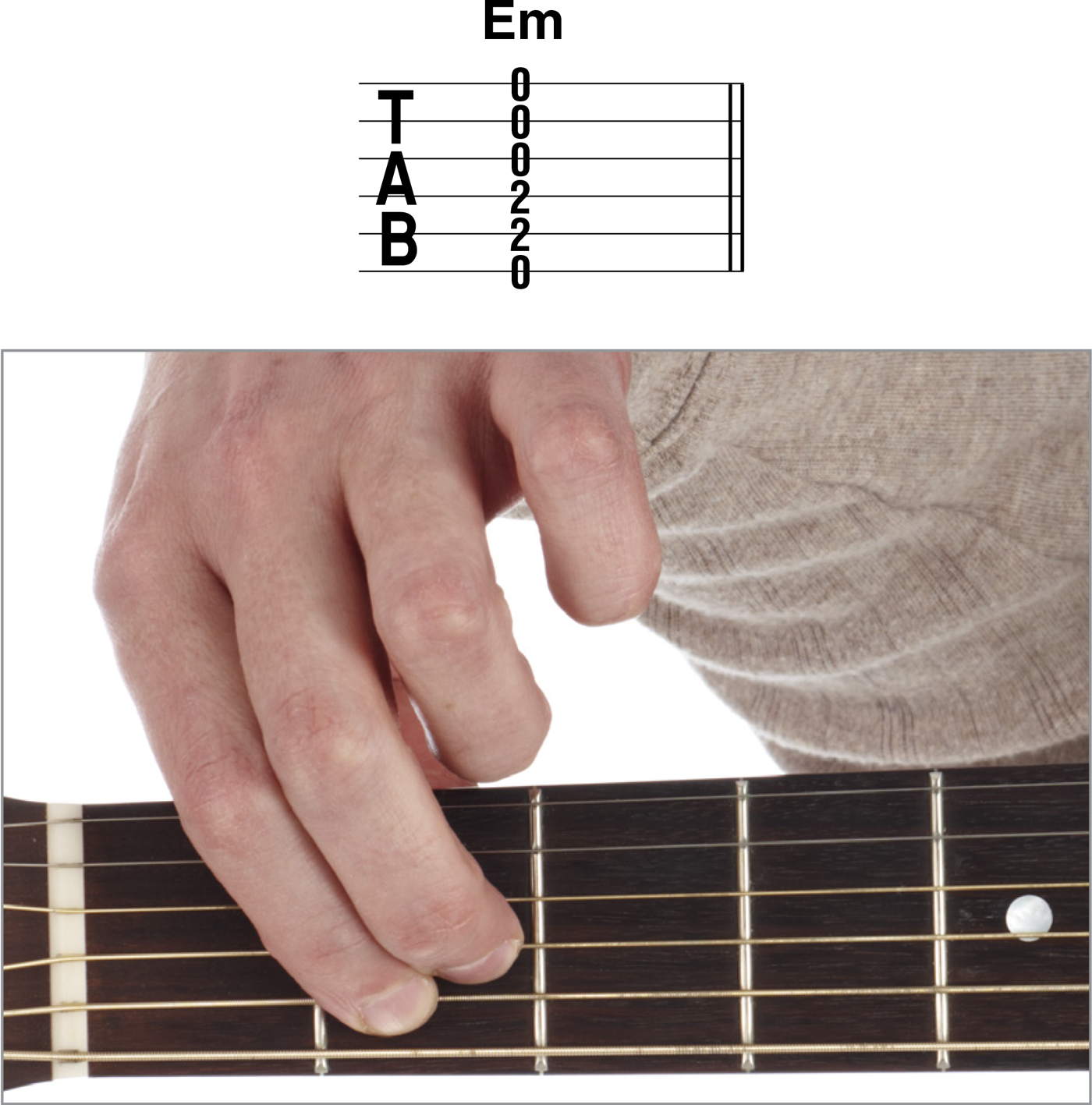
7777 W. Bluemound Rd. P.O. Box 13819 Milwaukee, WI 53213
Copyright 2014 by HAL LEONARD
International Copyright Secured All Rights Reserved
For all works contained herein:
Unauthorized copying, arranging, adapting, recording, Internet posting,
public performance, or other distribution of the printed music
in this publication is an infringement of copyright.
Infringers are liable under the law.
Visit Hal Leonard Online at
www.halleonard.com
CONTENTS
Parts of the Guitar, Tuning, Hand Position
Tablature, Repeat Signs
Chords, Open Chords, Em, C, G, D, Strumming,
Bar Lines, Beat, Staccato, Chord Charts
Tempo, Riff, Alternate Picking
Rhythm Tab, Measures, Time Signature, 4/4 Time, Quarter Note
3/4 Time, Half Note, Eighth Note, Rest, Quarter Rest, Half Rest
Tie, Eighth Rest, Pickup Note, Whole Note, Whole Rest
Am, Dm, E, A, Accent
Let Ring, Double Stops
Ending Brackets
Slides, Legato, Slur, Hammer-On, Pull-Off
Ascending, Descending
GETTING STARTED
Tuning
The quickest and most accurate way to get in tune is to use an electronic tuner.
The guitars six open strings should be tuned to these pitches:
E (thickest)ADGBE (thinnest)
If you twist a strings tuning key clockwise, the pitch will become lower; if you twist the tuning key counterclockwise, the pitch will become higher.
Adjust the tuning keys until the electronic tuners meter indicates that the pitch is correct.
HOLDING THE GUITAR
Use the pictures below to help find a comfortable playing position. Whether you decide to sit or stand, its important to remain relaxed and tension-free.
LEFT-HAND POSITION
Fingers are numbered 1 through 4. Arch your fingers and press the strings down firmly between the frets with your fingertips only.
Place your thumb on the underside of the guitar neck. Avoid letting the palm of your hand touch the neck of the guitar.
RIGHT-HAND POSITION
Hold the pick between your thumb and index finger.
Strike the strings with a downward motion approximately halfway between the bridge and neck, near the bottom of the soundhole.
YOUR FIRST NOTES
Guitar music is written in a form of notation called tablature , or tab , for short. Each line represents a fret. The thickest string played open, or not pressed, is the low E note. In tab, an open string is represented with a zero (0). The note F is located on the 1st fret. Press, or fret, the string with your 1st finger, directly behind the first metal fret.
Play the theme from Jaws using the notes E and F. Attack the string with a downstroke of your pick. Speed up as the numbers get closer together.
THEME FROM JAWS
By John Williams
Copyright 1975 USI B MUSIC PUBLISHING
Copyright Renewed
All Rights Controlled and Administered by SONGS OF UNIVERSAL, INC.
Now try some notes on other strings. Keep the fretted notes held down and let the open strings ring. Youll need to arch your fretting fingers so that they touch only the strings with fretted notes.
UNPLUGGED
Copyright 2014 by HAL LEONARD CORPORATION
| BATMAN THEME | FREE FALLIN |
|---|
| When tab numbers are stacked, play them together. | Press down two notes at a time to play this hit song by Tom Petty. |
 |  |
| Words and Music by Neal Hefti | Words and Music by Tom Petty and Jeff Lynne |
| 1966 EMI MILLER CATALOG INC. (Renewed) | Copyright 1989 Gone Gator Music and EMI April Music Inc. |
All Rights Administered by EMI MILLER CATALOG INC. (Publishing)
and ALFRED MUSIC (Print) |
PLAYING CHORDS
Chords are groups of notes played together, usually on four, five, or all six strings. In tab, chords are shown as stacked numbers. Your first chord is E minor, which involves two fretted notes, held down by your 1st and 2nd fingers on the 5th and 4th strings, respectively, while the remaining open strings are allowed to ring. Chords with open strings are called open chords .
GET UP STAND UP
When you play all the notes in a chord with a single pick stroke, its called strumming . Strum the E minor chord in a downward motion to play a basic version of this Bob Marley song.
Words and Music by Bob Marley and Peter Tosh
Copyright 1974 Fifty-Six Hope Road Music Ltd., Odnil Music Ltd.,

